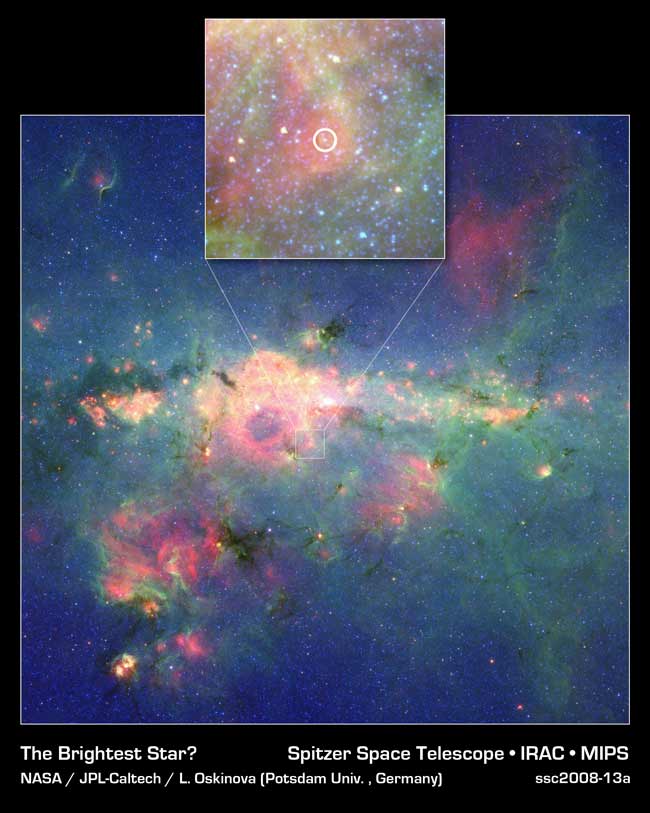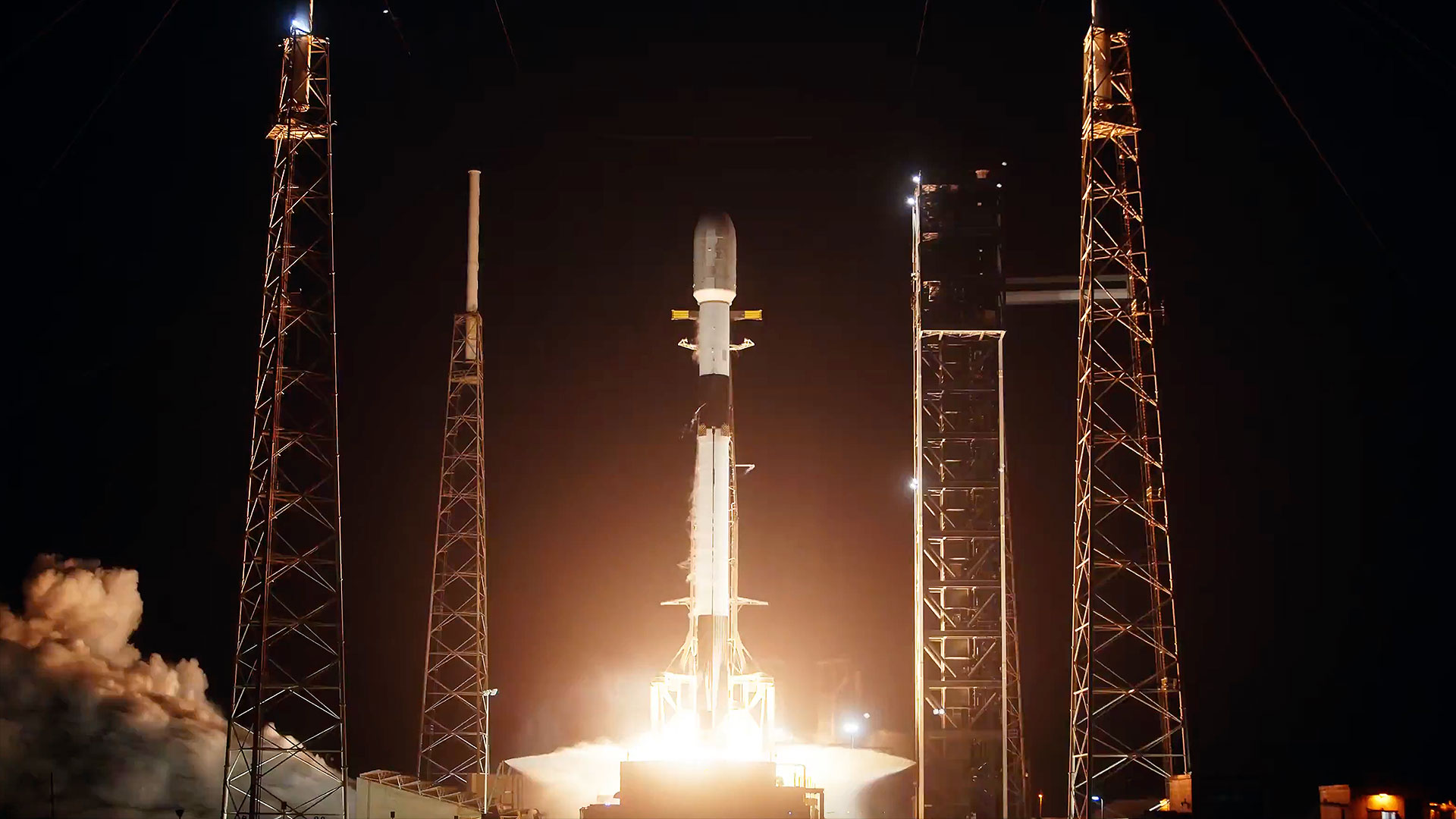Star Vies to be Brightest

Aknown star has reemerged on the scene as the second brightest in our galaxy andmay in fact be the brightest.
The"Peony nebula star" shines as brightly as 3.2 million suns, butlurked in obscurity among interstellar gas and dust in the central region ofthe Milky Way — until now.
NASA?sSpitzerSpace Telescope used infraredvision to scope out the star behind the Peony nebula?s reddish cloud ofdust. The European Southern Observatory?s New Technology Telescope in Chilealso used infrared vision to see the star?s true power behind its dusty veil.
Otherstars are muchbrighter as seen from Earth, but that's because of their proximity. Bothdistance and dust served to shelter the Peony nebula star from Earth observers26,000 light years away.
Thenewcomer is thought to fall short of the current brightest star, Eta Carina,which blazes with the light of 4.7 million suns. But astronomers hold out thepossibility that the Peony nebular star may prove even brighter, if they couldjust get a better look at it.
Theyalso suspect that other bright talent may lurk in the star-packed region, whichsuggests a new star search is in order.
"Thereare probably other stars just as bright if not brighter in our galaxy thatremain hidden from view," said Lidia Oskinova, astronomer at Potsdam Universityin Germany.
Breaking space news, the latest updates on rocket launches, skywatching events and more!
- Top 10 Star Mysteries
- Images: Spitzer?s Infrared Views of the Cosmos
- The Strangest Things in Space

Space.com is the premier source of space exploration, innovation and astronomy news, chronicling (and celebrating) humanity's ongoing expansion across the final frontier. Originally founded in 1999, Space.com is, and always has been, the passion of writers and editors who are space fans and also trained journalists. Our current news team consists of Editor-in-Chief Tariq Malik; Editor Hanneke Weitering, Senior Space Writer Mike Wall; Senior Writer Meghan Bartels; Senior Writer Chelsea Gohd, Senior Writer Tereza Pultarova and Staff Writer Alexander Cox, focusing on e-commerce. Senior Producer Steve Spaleta oversees our space videos, with Diana Whitcroft as our Social Media Editor.
